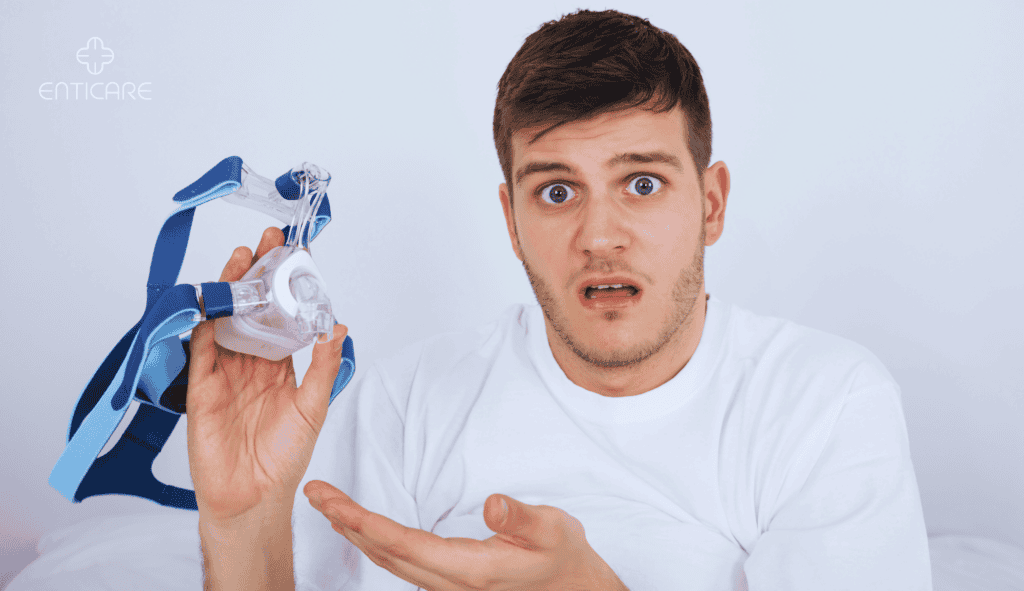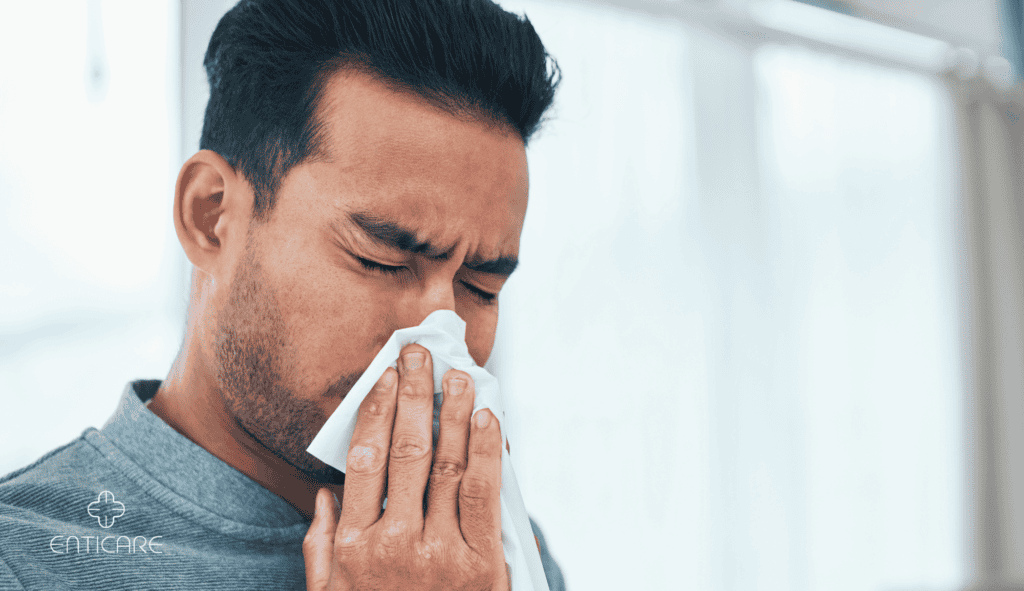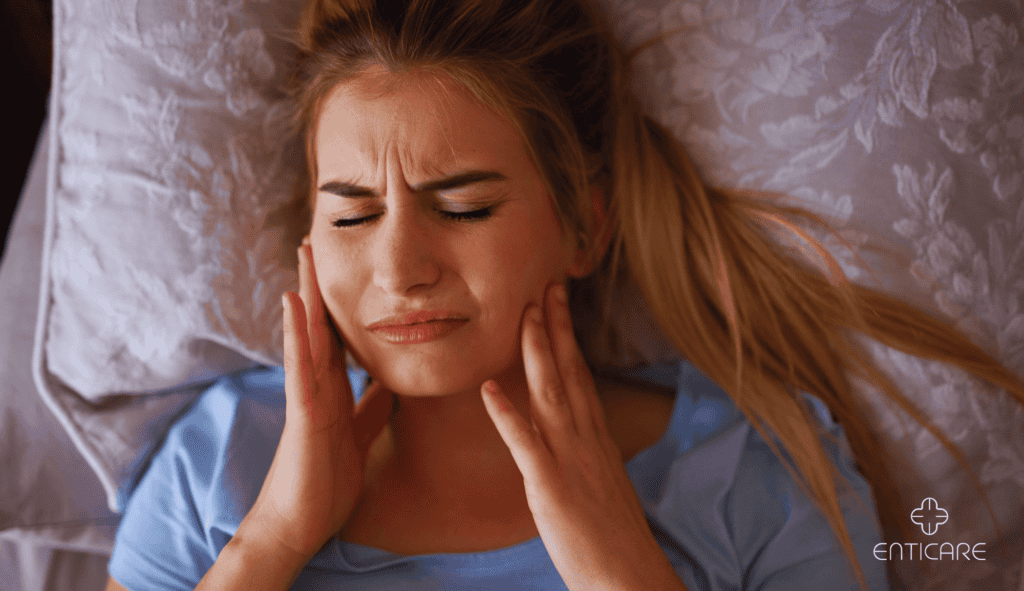Continuous Positive Airway Pressure (CPAP) therapy can be life-changing for those with sleep apnea, helping to ensure a restful night’s sleep by keeping the airways open. However, some users experience unexpected side effects, including headaches. If you’re wondering, “Why is my CPAP giving me headaches?” you’re not alone. CPAP headaches can be frustrating, but the good news is that many of the causes can be addressed with simple adjustments or medical guidance.
An apnea headache is a specific type of headache experienced by individuals with obstructive sleep apnea (OSA) upon waking, characterized by a pressing pain typically on both sides of the head. These headaches differ from migraines as they usually do not include additional symptoms like nausea or sensitivity to light and sound.
In this blog, we’ll explore common reasons why CPAP therapy might be causing headaches and provide actionable tips to help you resolve these issues.

CPAP Pressure Settings and Headaches
One of the most common reasons people experience headaches from CPAP therapy involves the air pressure settings. CPAP devices work by delivering constant airflow into the airways, but if the pressure is too high or too low, it can cause discomfort.
High CPAP Pressure
High CPAP pressure settings can create excessive airflow, which may lead to sinus pressure and result in headaches. You may feel this pressure on your forehead or behind your eyes. Adjusting the pressure settings under the guidance of your doctor can often resolve this issue.
Low CPAP Pressure
If your CPAP pressure settings are too low, you may still experience airway blockages, which can disrupt your sleep and contribute to sleep apnea headaches. Low pressure may also reduce the effectiveness of the treatment, making it necessary to increase the airflow for better results.
Auto-Adjusting CPAP
Many CPAP machines come with an auto-adjusting feature that modifies air pressure throughout the night based on your breathing. While this can be helpful, some users may still experience pressure-related headaches. In such cases, switching to a fixed pressure setting might help reduce discomfort.
Mask Fit and Head Tension
The fit of your CPAP mask plays a vital role in ensuring comfort throughout the night. A poorly fitting mask can lead to headaches caused by either physical pressure on your head or neck or due to improper airflow.
Too Tight or Too Loose Mask
If your mask is too tight, it can put unnecessary pressure on your face, forehead, and scalp, potentially leading to tension headaches. Conversely, a loose-fitting mask may not create an effective seal, causing air leaks that disrupt your sleep and cause a morning headache. Finding the right fit and adjusting the straps correctly can alleviate these problems.
Mask Straps
CPAP masks come with adjustable straps to ensure a secure fit, but if these straps are too tight, they can dig into your skin and create pressure points around your head, resulting in headaches. Try loosening the straps slightly while still maintaining a proper seal to see if this reduces discomfort.
Different Mask Styles
There are several types of CPAP masks, including nasal pillows, nasal masks, and full-face masks. If you’re experiencing headaches, switching to a different mask style that puts less pressure on your face and head might help. Consult your doctor or sleep specialist to determine which mask style best suits your needs.
Mask and Strap Material Allergies
While CPAP masks are designed to be comfortable and effective, some users may experience allergic reactions to the materials used in the masks and straps. These reactions can manifest as skin irritation, redness, and even headaches. If you suspect that your CPAP mask is causing an allergic reaction, it’s essential to consult with your healthcare provider. They can help identify the specific allergen and recommend hypoallergenic mask options that are less likely to cause irritation. Hypoallergenic masks are made from materials that are less likely to trigger allergies, providing a more comfortable and headache-free experience.

Sinus and Nasal Issues from CPAP Therapy
CPAP therapy can cause headaches due to sinus and nasal issues. The constant airflow can dry out your nasal passages or exacerbate existing sinus conditions, leading to discomfort.
Nasal Congestion
CPAP users often report experiencing nasal congestion due to the continuous airflow. When nasal passages become inflamed or blocked, this can lead to sinus pressure, which may manifest as headaches. A heated humidifier attached to your CPAP machine can help alleviate nasal congestion by adding moisture to the air.
Sinus Pressure
Some CPAP users experience increased sinus pressure from the forced air, especially if they have pre-existing sinus issues. Sinus headaches often result from this added pressure, making it essential to manage sinus health while using CPAP therapy to prevent apnea headaches. Consider using saline nasal sprays or consulting a doctor for sinus treatments.
Mouth Breathing
Mouth breathing while using CPAP therapy can lead to dry mouth and exacerbate headaches. If you tend to breathe through your mouth during sleep, consider using a full-face mask or a chin strap to encourage nasal breathing, which may help prevent dryness and reduce headaches.
Dehydration and CPAP Headaches
Dehydration is another common culprit behind CPAP-related headaches. The air pressure from the CPAP machine can dry out your airways, especially if you sleep with your mouth open. Dehydration, in turn, can lead to headaches.
Dry Air from CPAP Machine
Using a CPAP machine without a humidifier can dry out your nasal passages and throat, leading to dehydration. This dryness often causes headaches in the morning. Adding a heated humidifier to your CPAP setup helps keep your airways moist and prevents dehydration.
Hydration During the Day
Ensuring that you stay well-hydrated throughout the day can also help prevent CPAP-related headaches. Drink plenty of water and avoid diuretics like caffeine or alcohol before bed, as they can increase the risk of dehydration and contribute to headaches.
Adjusting Humidity Levels
If you already use a humidifier with your CPAP machine, try adjusting the humidity settings. Sometimes, increasing the moisture level can reduce dryness in the nasal passages and prevent headaches caused by dehydration.
Air Quality and Humidity
Impact of Air Quality on CPAP Therapy
The quality of air delivered by your CPAP machine can significantly impact your comfort and the effectiveness of your therapy. Dry air can irritate your nasal passages and throat, leading to discomfort and headaches. On the other hand, humidified air can help reduce congestion and promote more comfortable breathing. Using a humidifier with your CPAP machine can maintain a comfortable air quality, preventing the dryness that often leads to headaches. Ensuring that the air you breathe is properly humidified can make a significant difference in your overall CPAP experience.
Managing Humidity for Comfort
Managing humidity levels is essential for a comfortable CPAP therapy experience. If you find that the air from your CPAP machine is too dry, consider using a heated humidifier to add moisture to the air. This can help prevent dryness in your nasal passages and throat, reducing the likelihood of headaches. Additionally, it’s important to regularly clean and maintain your humidifier to prevent bacterial growth and ensure optimal performance. By adjusting the humidity settings and keeping your equipment clean, you can enhance your comfort and effectiveness of your CPAP therapy.

Underlying Health Issues Contributing to CPAP Headaches
Sometimes, CPAP headaches occur because of underlying health conditions or sleep disorders. Identifying and managing these conditions is essential to finding relief.
Sleep Apnea and Oxygen Levels
Sleep apnea itself can cause headaches due to low oxygen levels during the night. If your CPAP machine isn’t properly calibrated or if you’re not using it consistently, it may not prevent the drop in oxygen levels that lead to morning headaches. Make sure to use your CPAP machine regularly and get your device checked to ensure it’s working correctly.
Temporomandibular Joint (TMJ) Disorder
Some CPAP users have underlying temporomandibular joint (TMJ) disorders, which can lead to jaw pain and headaches, especially when using a CPAP mask that puts pressure on the jaw. In such cases, wearing a dental appliance designed for TMJ or adjusting your mask style can help alleviate headaches.
Blood Pressure and Headaches
High blood pressure can cause headaches, and untreated sleep apnea may worsen hypertension. If you’re experiencing headaches despite CPAP therapy, it may be worth discussing your blood pressure with your doctor. Managing both sleep apnea and high blood pressure can significantly reduce the frequency of headaches.
Take Action to Prevent CPAP-Related Headaches
CPAP therapy is essential for managing sleep apnea, but headaches can disrupt the relief it offers. From adjusting pressure settings to improving mask fit and addressing underlying health concerns, you have multiple options to reduce or eliminate CPAP-related headaches. If headaches persist, consulting with a healthcare provider can help you fine-tune your CPAP therapy and ensure you get the restful sleep you deserve.
If you’re experiencing ongoing discomfort with your CPAP machine, don’t wait. Schedule an appointment with our experts at ENTicare today to get personalized guidance and support for your sleep apnea treatment.
👉 Schedule your appointment here and breathe easier tonight!

